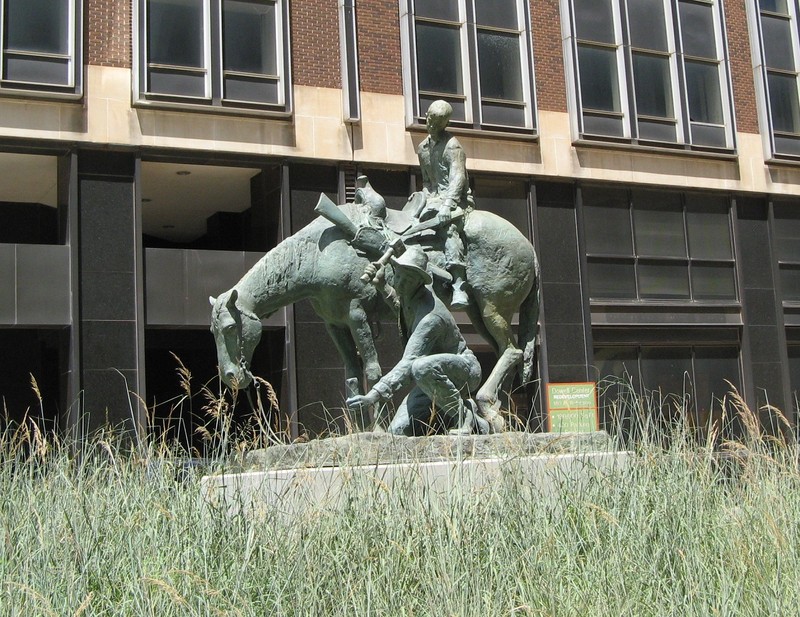Pioneers of 1889
Introduction
Text-to-speech Audio
Monument depicting the 1889 Land Run in which mostly white settlers rushed in to claim "Unassigned Lands" in what was then Indian Territory. This statue and several others that followed in northern Oklahoma focus on the excitement of the "land runs," which sets them apart from pioneer monuments elsewhere in the United States.
Images
Pioneers of 1889

Backstory and Context
Text-to-speech Audio
This monument honoring Oklahoma settlers was dedicated on "89ers Day" in 1960. It was sculpted by Oklahoma City artist Leonard McMurry and donated by B. D. and Pauline Eddie. According to its dedicatory plaque, this statue of a man using a hatchet to drive a stake into the ground while his young son sits atop their horse commemorated the "strong men and women" who settled in the 1889 Land Run.
The statue's focus on depicting a land run makes it typical of other, more recent Oklahoma monuments, and sets it apart from pioneer monuments erected across the United States from the 1880s to the present. Most pioneer monuments elsewhere in the US focus on women carrying American culture westward or families' persistence after they settled in the West. [1]
"Land Runs" are a historical phenomenon closely associated with Oklahoma. When American settlers moved westward in the mid-19th century, Oklahoma was designated as "Indian Territory"--land set aside for Native Americans. Native groups pushed out of the eastern United States were relocated onto the homelands of Indigenous peoples within that Indian Territory.
The 1889 Land Run focused on territory that previously had been set aside for Indian reservations. Lands held by Indigenous groups as well as emigrant tribes would be opened to white settlement in future land runs.
In 1889, US President Benjamin Harrison proclaimed the nearly 2-million-acre "Unassigned Lands" open for settlement. The so-called Springer Amendment allowed settlement under the terms of the 1862 Homestead Act and denied earlier settlers traditional squatters' rights to claim the lands on which they had settled. An estimated 50,000 people rushed into the previously designated "Indian Territory" in hopes of claiming 160 acres of land. That land rush set the stage for the organization of Oklahoma Territory, and then the state of Oklahoma in 1907.[2]
Sources
- Prescott, Cynthia Culver. Pioneer Mother Monuments: Constructing Cultural Memory. Norman, Oklahoma. University of Oklahoma Press, 2019.
- Hoig, Stan. Land Run of 1889, The Encyclopedia of Oklahoma History and Culture. Accessed February 17th, 2024. https://www.okhistory.org/publications/enc/entry.php?entry=LA014.
Photo by David Prescott
